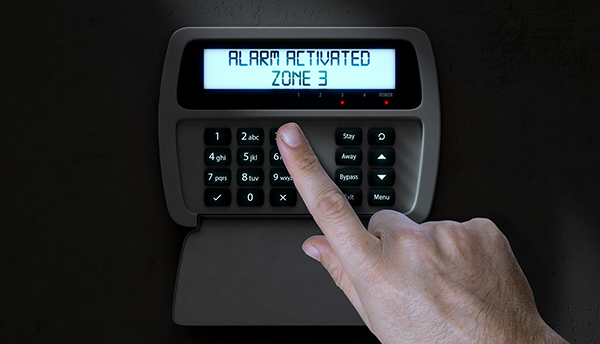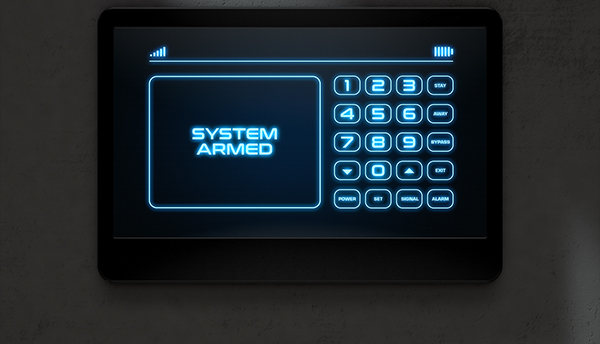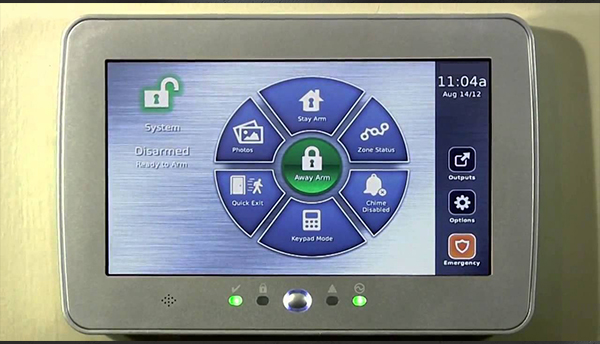

Burglar Intrusion Detection Alarm System Stage 1: Detection Through Alarm Sensors
Intrusion systems have a variety of sensors and circuits installed within their hardware to monitor the conditions of the environment they are designed to protect. Typically, the environment will not change when the alarm system is “armed”—or active—and so the system is not triggered. It is only when a sensor detects some sort of shift in the protected area that it triggers and begins the alarm process.
When the system detects an intrusion, the sensor notifies a central control panel. There are many different sensors on the market that can detect distinct types of environmental change. The type of sensor used depends on the area in which each portion of the intrusion system is designed to protect.
Burglar Intrusion Detection Alarm System Stage 2: Verify Alarms at Central Alarm Panel
An intrusion system will have one or more keypads strategically located throughout the protected buildings. These keypads allow authorized users to arm and disarm the system, as well as report on the overall system status. The central control panel—the on-site “brains” of the security system which evaluates incoming alarms. It processes the event to determine whether incoming alarms are “false” alarms that the system should ignore, or “verified” alarms that indicate the presence of an intruder or a change in the environment.
False Alarms
False alarms occur when the alarm system is unable to verify that a sensor’s detected disturbance is a true crime-in-progress, or if the alarm was triggered for another reason. User error, rodents, balloons falling objects, or bad installations all contribute to various false alarms, which may cost alarm system owners penalty fees.

Therefore, any alarm system must verify that a sensor’s alarm is truly triggering on a crime, and not just a keyholder who forgot to cancel an alarm. Excellent alarm systems will follow a customized, multi-step process to have a human—either a keyholder or the security monitoring center—verify that the sensors’ alarms are triggering on crime, not owners.

Burglar Intrusion Detection Alarm System Stage 3: Notify the Authorities and / or Keyholders of Crime in Progress
Once the system verifies that an alarm indicates a crime-in-progress—or multiple attempts to further verify the alarm are unsuccessful—the monitoring center then takes the appropriate action, which in many cases included notification local authorities of 459-Audible Alarm Trigger requiring immediate police presence. Depending on the jurisdiction, the authorities will request verification before sending patrol units to the scene, which the monitoring center should be able to supply on demand.
While this process is taking place in the background, the multiple high decibel electric alarm sirens alert anyone inside / outside of the building. Depending on the system design / your request, visual notifications / flashing lights / strobes are part of the alarm process. These notifications serve a dual purpose. They tell the criminal that there is a professional alarm system installed, which helps deter the continued theft / vandalism. A recent EW Surveillance survey found that building’s with installed security systems experience 40% less theft than those without.
The loud noises and bright lights alert anyone in the immediate vicinity that a crime is in progress, bringing help and additional eyewitnesses to the scene. From there, an open alarm ends when the authorities and system keyholders arrive on the scene to address the break-in with minimal loss and property damage. Or the keyholders use their mobile phone application to disable the alarm. The system’s logs also provide additional evidence to the authorities, should charges be pressed against the would-be burglar.
Intrusion Detection System Key Components
Zone expander and assignments
Touch Screen Keypads
Sensors / Detectors:
Door and window magnetic contacts
Motion Detectors
Glassbreaks
Photoelectric breams
Interior/exterior sirens
Hold-up panic buttons
Silent alarms
Voice (audio) alarm verification
Remote mobile phone control app
Duress code
24-hour alarm monitoring UL listed central stations
Alarm testing cellular backup system

Would an intrusion system help secure your business from break-ins? Contact us for a free consultation. We would love to explain how a properly designed intrusion detection system can integrate with live video surveillance to better protect your assets. We will also introduce you to UL listed, high responsive central station alarm monitoring centers who will be in contact with you 24/7 regarding the status of your intrusion detection system.
Should you have any questions, please know that we would be happy to speak with you and your team via email, phone or in-person. You may visit our contact page to reach us. We look forward to helping you on your next project.




